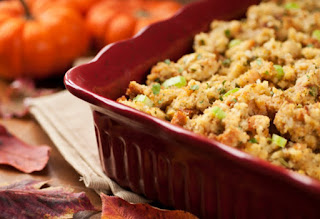
It is helpful to have a few simple culinary terms, tools, and techniques under your belt before diving into the recipes.
The first one is the term zest, aka the outer colored portion of a citrus peel, or in this case the orange outer layer. When a recipe calls for zest, it is typically asking for the outer peel to be finely grated or minced.
There is a bit of finesse involved, as we want to separate the zest from the white, pithy inner layer of the peel, which can be quite bitter. The most straightforward way would be to use the smallest holes on a simple rasp, plane, or box grater, and hand grate a washed orange until the orange layer is gone. If you don’t have a grater on hand, you can use a vegetable peeler and fleck off small pieces of zest at a time until the orange looks white. A typical orange will yield about two to three tablespoons of grated zest.
Not only is zest tangy and delicious; it is also loaded with polyphenols,
which have anti-inflammatory properties. And if you get a little of the white
pith mixed in, don’t worry; bitters are very healthy and it’s not likely to
overpower the sweet piquancy of the zest.
Another helpful technique is knowing how to juice an orange. No matter which technique you use to juice, do roll the orange on the counter a few times first, to help break down the cell walls so the fruit releases its juices more readily.
If you have a manual
juicer, cut the orange in half and simply press and twist each half downward
onto the juicer, making sure that the whole rig is situated over a catch bowl
to collect the prized juice. If you do
not own a juicer, there is a fu --if slightly less neat--way to juice that I
learned from a friend: Cut the orange
in half at its widest diameter. Take a
fork and poke the tines all over the exposed innards of the fruit. Then, plunge
the fork into the center of the orange, hold it over a bowl, and twist. Continue this process, moving outward from
the center to the rind until not one ounce of juice remains in the fruit. Pick
or strain out the seeds and voila! You
have juiced your orange.
Important tip: If
a recipe calls for both orange juice and zest, remember to zest the orange
first, as zesting a juiced orange is almost impossible.
Which Oranges Should I Use?
Here’s an important question: Which orange varieties are best for zesting, juicing, and cooking?
For zesting, any variety will do, but to minimize waste it is wise to use the same orange as the one you will be juicing. A general rule of thumb is that oranges with the most vibrant rind color generally procure the tastiest zest and yummiest juice. Valencias, Tangelos, Satsumas, Blood Oranges, Clementines, Sugarbelles, Honeybelles, and even Navels are all great choices—as long as they are sweet! For straight-up cooking, as in with your apple cider, you can’t lose with Navels or Blood Navels, as they hold their shape well and have the added bonus of being seedless.
The Recipes!
Here are some simple and delicious recipes for your holiday cranberry sauce, stuffing, green beans, and apple cider, all enhanced with the flavor appeal of oranges. These recipes were carefully chosen for nutrition, ease of preparation, and easy substitution with gluten-free and/or vegan alternatives. Not sure about whether you’re buying the best oranges for each recipe? Don’t worry: here at Florida Fruit Shippers, we’ve got you covered: Premium Oranges
In this recipe, you'll add a little "zest" to your cranberry sauce--literally!
No worries about bland dressing with this recipe! Can substitute gluten-free dressing mix and vegan butter and bouillon if desired.
Mmmmm, ginger and orange together....
Like ginger, the spicy notes of cinnamon pair beautifully with oranges.
And of course, you can’t lose by garnishing your Thanksgiving turkey (or tofurkey) with slices of a color variety of delicious oranges. Have a delicious Thanksgiving!
Additional Sources:
https://www.myrecipes.com/extracrispy/the-best-way-to-make-fresh-oj-without-a-juicer






